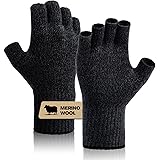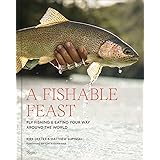Mastering Survival Food: The Art of Steaming Big Fish in the Wild
In dire wilderness scenarios, the ability to procure and prepare sustenance is not merely a skill; it is the cornerstone of survival. The video above delves into the critical practice of obtaining and preparing a significant catch, emphasizing the importance of securing a sustainable food source like fish. When faced with the stark realities of an emergency situation, transforming raw ingredients into a nourishing meal requires ingenuity, knowledge, and a deep understanding of natural resources. This article expands upon the principles introduced in the video, focusing on why and how steaming stands out as an exceptionally effective method for preparing a substantial survival food source: steaming big fish.
Historically, humanity’s relationship with the natural world has always revolved around food. Our ancestors perfected myriad techniques for cooking, preserving, and utilizing every part of their catch, long before modern conveniences existed. In a survival context, reverting to these fundamental methods becomes essential. The objective is clear: maximize nutritional intake, minimize energy expenditure, and ensure food safety. Steaming, particularly for a generous catch, addresses these goals with remarkable efficiency.
The Nutritional Edge: Why Fish is a Lifeline in Survival
Fish offers an unparalleled nutritional profile crucial for maintaining energy and health in a high-stress, physically demanding wilderness survival situation. Rich in lean protein, essential amino acids, and vital omega-3 fatty acids, fish provides the necessary building blocks for muscle repair, sustained energy, and cognitive function—all indispensable when facing the elements.
Imagine if you had been without significant protein for days; the immediate surge of energy and mental clarity from a freshly steamed fish could be the difference between making a critical decision or succumbing to exhaustion. Moreover, many fish species are packed with vitamins and minerals, including Vitamin D, B vitamins, iodine, and selenium. These micronutrients are often overlooked but are absolutely critical for overall physiological functioning, from immune response to thyroid health, especially when your body is under duress.
Furthermore, fish is generally a low-fat protein source, which means your body doesn’t need to work as hard to digest it, freeing up valuable energy for other survival tasks. In many freshwater and saltwater environments, fish populations can be abundant, making them a more reliable and calorie-dense food source compared to foraging for scarce plants or attempting to hunt larger game without proper tools.
From Water to Plate: Essential Field Dressing for Your Survival Catch
Once a fish is caught, the clock begins ticking. Proper and immediate field dressing is paramount, not only for hygiene but also to preserve the quality of the meat. This process involves swiftly bleeding, gutting, and, if possible, scaling the fish. The video likely touched upon the basic methods, but understanding the ‘why’ behind each step enhances the practice.
Bleeding the fish is important because it removes metabolic wastes and improves the flavor and texture of the meat. A quick cut behind the gills, allowing the fish to bleed out, is usually sufficient. Subsequently, gutting the fish prevents the digestive enzymes from spoiling the flesh. Using a sharp improvised tool—perhaps a sharpened stone or a piece of bone—carefully slit the belly from the anal vent to the gills, removing all internal organs. It is wise to discard the guts away from your campsite to avoid attracting scavengers.
Scaling, though sometimes optional for steaming, can make the final meal more palatable. This can be done with a sturdy stick, the back of a knife, or even a shell, scraping against the grain of the scales. Following these steps ensures that your big fish for dinner is clean and ready for cooking, minimizing the risk of foodborne illness and maximizing its potential as a nourishing survival food.
The Steaming Advantage: Preserving Nutrients and Flavor
While grilling or roasting fish might seem more straightforward in a wilderness setting, steaming offers distinct advantages that are particularly beneficial for survival food preparation. Firstly, steaming retains moisture, resulting in a tender, flaky texture that is far more enjoyable and easier to digest than dry, overcooked fish. This is critical when you might have limited access to water or spices to enhance flavor.
Secondly, and perhaps most importantly, steaming is a gentle cooking method that helps preserve delicate nutrients. Unlike boiling, where water-soluble vitamins can leach into the cooking water, steaming subjects the fish to moist heat, keeping more of its nutritional integrity intact. Studies indicate that steaming can preserve up to 90% of certain antioxidants and vitamins, compared to other methods that might reduce them by 30-50%. This means you’re getting more nutritional bang for your buck from every bite of your steaming fish, which is invaluable in a calorie-restricted environment.
Furthermore, steaming requires minimal direct contact with a flame, reducing the risk of charring, which can introduce undesirable compounds. It also allows for efficient use of fuel; once your water is boiling, a relatively consistent heat can be maintained with less active fire management compared to open-flame cooking.
Ingenious Methods: Crafting a Wilderness Steamer
The beauty of steaming big fish in a survival context lies in its adaptability. You don’t need fancy equipment; nature often provides all the necessary components. Here are a few improvised methods:
1. The Earth Oven (Pit Steaming)
This ancient primitive cooking method is highly effective for larger fish. The process begins with digging a pit, roughly two feet deep and wide enough to accommodate your fish and some heated rocks. Build a robust fire directly in the pit, allowing it to burn down to a bed of coals and thoroughly heat the surrounding rocks for an hour or more. Once the rocks are glowing, carefully remove some of the coals and line the bottom of the pit with edible, moisture-rich leaves like large burdock, maple, or even banana leaves if available. Place your cleaned fish (which can be wrapped in more leaves or even mud for added protection) on this leaf bed. Add more hot rocks on top of the fish, followed by another layer of leaves, and finally, cover the entire pit with earth, sealing in the heat and steam. The fish will slowly cook to perfection, typically within a few hours, creating a delicious and safe survival food meal.
2. Leaf-Wrapped Steaming Over Coals
For a quicker approach, especially with medium-sized fish, wrapping your cleaned fish tightly in large, non-toxic leaves is a practical solution. Leaves such as plantain, hosta, or even corn husks can work. Once wrapped, tie the bundle with natural cordage (vines, fibrous bark strips). Place this package directly on hot coals, not directly in the flames. The leaves protect the fish from burning while the moisture within the leaves themselves, combined with the fish’s natural juices, generates steam. Periodically turn the package to ensure even cooking. This method results in incredibly tender and flavorful steaming fish.
3. Rock or Log Steamer
This method involves creating a makeshift steaming rack. Find a suitable, heat-resistant container or a natural depression in a large rock. Fill it with water and bring it to a boil using fire-heated rocks dropped into the water. Above this boiling water, construct a small platform or grid using green sticks, stones, or a woven basket of reeds. Place your fish on this elevated platform, ensuring it doesn’t touch the water but is directly exposed to the rising steam. Cover the entire setup with a large leaf, a piece of bark, or even a sheet of scavenged tin or foil to trap the steam. This creates a true steamer, ideal for delicate fillets or smaller fish.
Selecting the Right Fish: A Matter of Edibility and Size
Not all fish are created equal when it comes to survival food. The video may have highlighted the importance of identifying edible species. Generally, freshwater fish found in clean rivers and lakes, such as trout, bass, catfish, and perch, are excellent choices. In coastal areas, cod, snapper, and various rockfish can provide substantial meals. Avoid any fish that exhibit unusual coloration, deformities, or are found in visibly polluted waters. While there are some poisonous fish species, especially in tropical marine environments, they are less common in typical temperate freshwater wilderness survival scenarios. Focus on common, easily identifiable species.
For steaming big fish, larger specimens are preferable as they offer more caloric value and fewer small bones, making them easier to consume without waste. A fish weighing 2-5 pounds can feed one to two people sufficiently for a meal, providing a significant boost of energy and protein.
Beyond the Catch: Augmenting Your Meal with Wild Edibles
While steaming fish is a fantastic protein source, a balanced diet, even in survival, includes carbohydrates and vitamins from plants. As your fish cooks, use the time to forage for safe, edible plants in the vicinity. Many wild greens, roots, and berries can complement your meal. Imagine harvesting nutrient-rich dandelions, cattail shoots, or wild onions to steam alongside your fish, or to prepare a simple side salad. This not only enhances flavor but also provides a broader spectrum of essential nutrients, bolstering your overall resilience. Always ensure 100% positive identification of any wild plant before consumption.
Food Safety: A Non-Negotiable in the Wild
Even with meticulous preparation and cooking, food safety remains paramount. Consuming contaminated food in a survival situation can be catastrophic, leading to dehydration and incapacitation. Ensure the fish is cooked thoroughly; the flesh should be opaque and flake easily. For larger fish, this might mean a longer steaming time, so patience is key. The internal temperature should ideally reach 145°F (63°C) for several minutes to kill most parasites and bacteria. Furthermore, use only clean water for steaming—purified if necessary—to avoid introducing pathogens. Maintain good hand hygiene throughout the process, even if it means using ash or sand as a makeshift scrub followed by rinsing with purified water. The effort to ensure safe preparation of your survival food is a small price to pay for your continued well-being.








